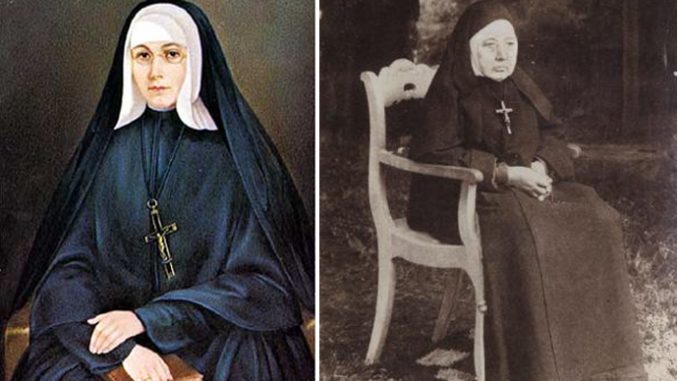How two 19th-century Blesseds truly read the “signs of the times”
Bl. Blessed Marie Rose Durocher and Bl. Angela Truszkowska both tackled the concrete problems of real persons within the realm of the possible in their circumstances, aware that “the poor you will have with you always” (Mt 26:11).
Two Blesseds appear on national liturgical calendars this week: Blessed Marie-Rose Durocher this past Sunday, October 6, in Canada and Blessed Angela Truszkowska on Thursday, October 10, in Poland. Both women deserve our attention.
Both women lived in the 19th-century and both were foundresses of religious congregations. Both came from relatively more secure homes and both, as a result of childhood illnesses, benefitted from the tutoring we would today call homeschooling.
Truszkowska was sensitive to what was going on around her and, while she had considered entering cloistered religious life, her contact with the St. Vincent de Paul Society in Warsaw turned her towards work with poor women and children in the former capital. She also came under the spiritual direction of Capuchin Honorat Kozminski and became a Third Order Franciscan, imbibing the spirituality of St. Francis.
It was at this time that she began gathering homeless women and poor children in Warsaw in two rooms she rented to provide care for their spiritual and temporal needs. Her “Institute” would eventually to her and her cousin committing themselves to an order Angela founded under the patronage of the 16th century Capuchin Felix of Cantalice. The Felicians [https://www.felician.org/ ] were born in 1855.
Her community grew in Poland and, by 1874, arrived in Wisconsin to tend the first of hundreds of schools being built by the rapidly expanding Polish American community, whose first heyday of North America bound mass immigration (the “emigracja za chlebem,” the “emigration for bread”) took place from 1870-1920. Mother Angela herself was involved in dispatching five Felicians to Pulaski, Wisconsin for that initial venture. She died in 1899. The Felicians also still exist although, in recent years, they have reduced their eight provinces in North America to one.
How two 19th-century Blesseds truly read the “signs of the times”
